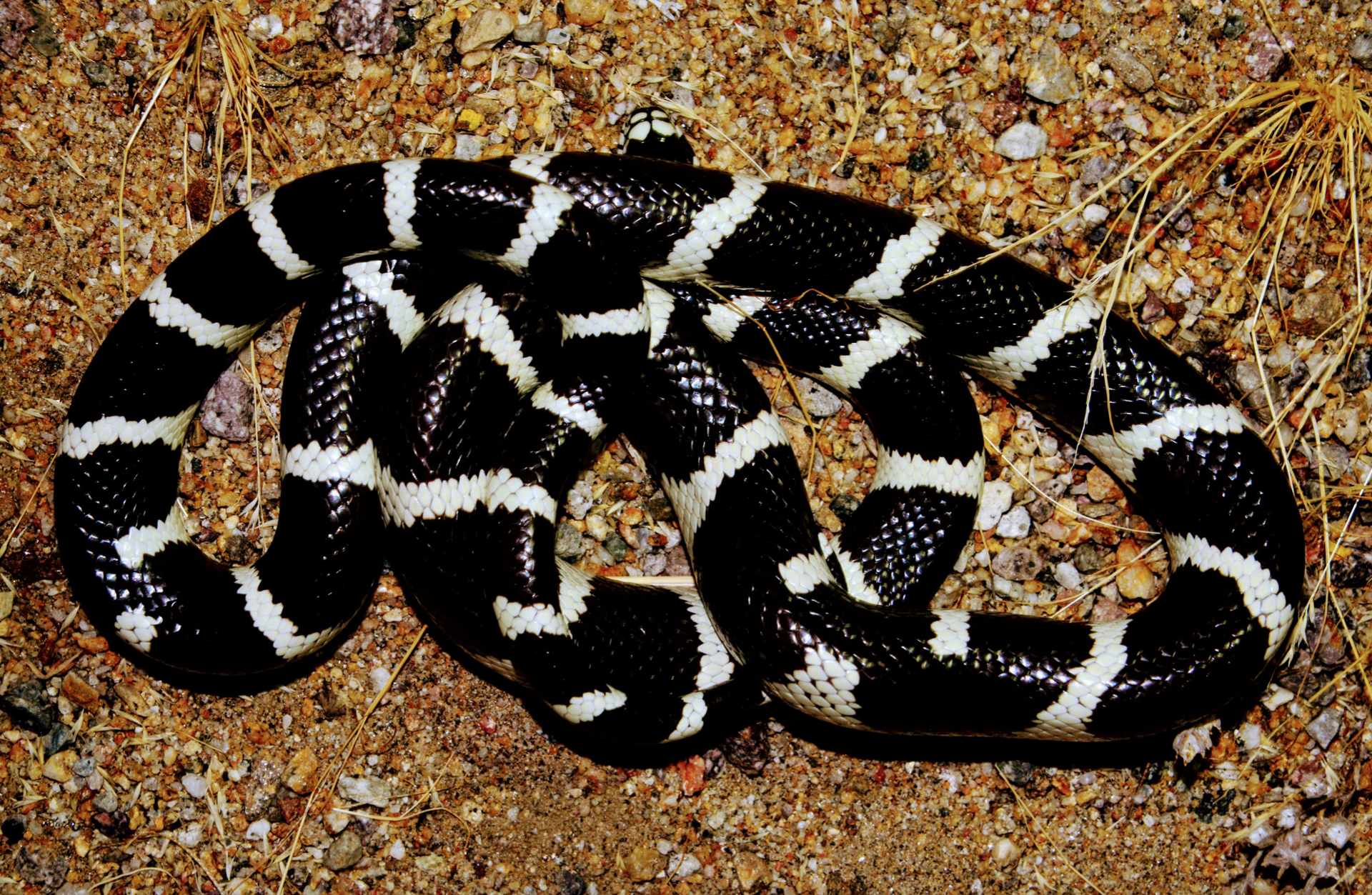Lampropeltis californiae

The Lampropeltis californiae, commonly known as the California kingsnake, is a striking and resilient species native to the western United States and northern Mexico. Renowned for its bold black-and-white banding, this nonvenomous colubrid snake is a master of adaptation, thriving in diverse habitats ranging from deserts and grasslands to woodlands and suburban areas.
One of the most fascinating traits of the California kingsnake is its immunity to rattlesnake venom, allowing it to prey on venomous snakes—a rare and impressive feat in the reptile world. It's also known for its powerful constriction abilities, making it an effective predator of rodents, birds, and amphibians. Despite its fierce hunting skills, the kingsnake is docile and easy to care for in captivity, which has made it a favorite among reptile enthusiasts.
In the wild, individuals typically grow to 2.5–3.5 feet, though some have reached lengths of up to 6 feet. Their coloration varies widely, with morphs ranging from banded to striped, and from black-and-white to brown-and-cream. These snakes are solitary, diurnal, and highly adaptable, often seen basking in the sun or hunting during the day.
The California kingsnake is a true marvel of nature—beautiful, bold, and biologically brilliant.
The name is NOT technically "latinized". It is taken as is, as it is a local name. Some local names have its Latin version like the city of Praha (eng. Prague) is called Praga in Latin (this can be considered a latinization as the name changed a bit to fit Latin in pronunciation and style) or Bratislava was called Istropolis, The Black Sea Pontus Euxinus, Sahara (derived from Arabic) was called Desertum Saharense, The Mediterranean Sea was calle Mare Nostrum (our sea) etc. But California has a completely different etymology. it originates from a 16th-century Spanish romance, Las Sergas de Esplandián, where it was the mythical island ruled by Queen Calafia, a Black Amazon queen. Spanish explorers, believing they'd found this island, named the region accordingly. The name likely draws from the Arabic khalifa (caliph), with possible influence from Latin calida fornax ("hot furnace"). First applied to Baja California, it later expanded to include Alta California, now the U.S. state, transforming fiction into geography. As Spanish is as a language derived from Latin, many Spanish names/words are transferred to latin without any change.
The reason why Henri Marie Ducrotay de Blainville mentioned the name as Californie is because he was french and this is the french version of this name "la Californie"
So, the epithet "californiae"is simply genitive of California.